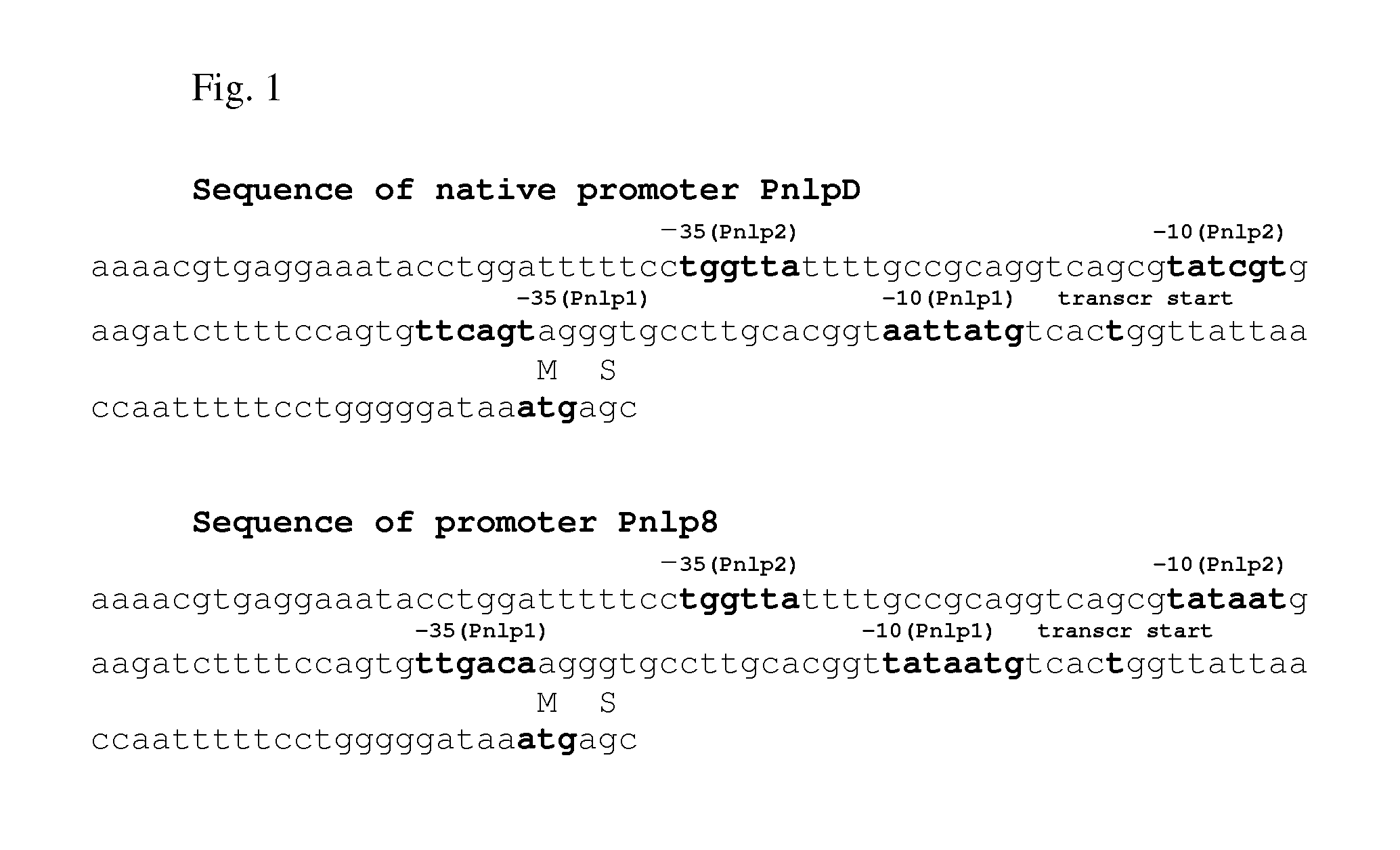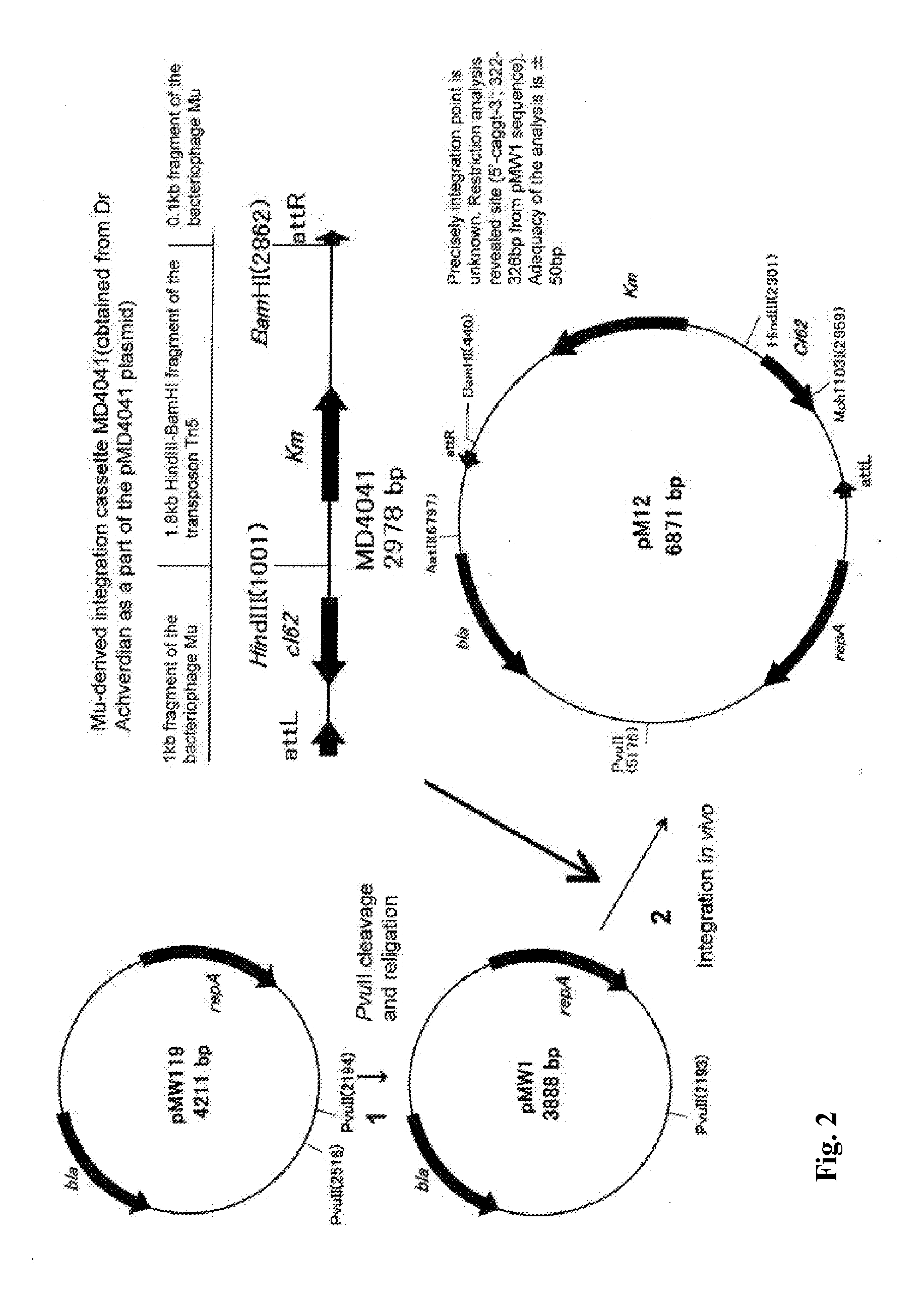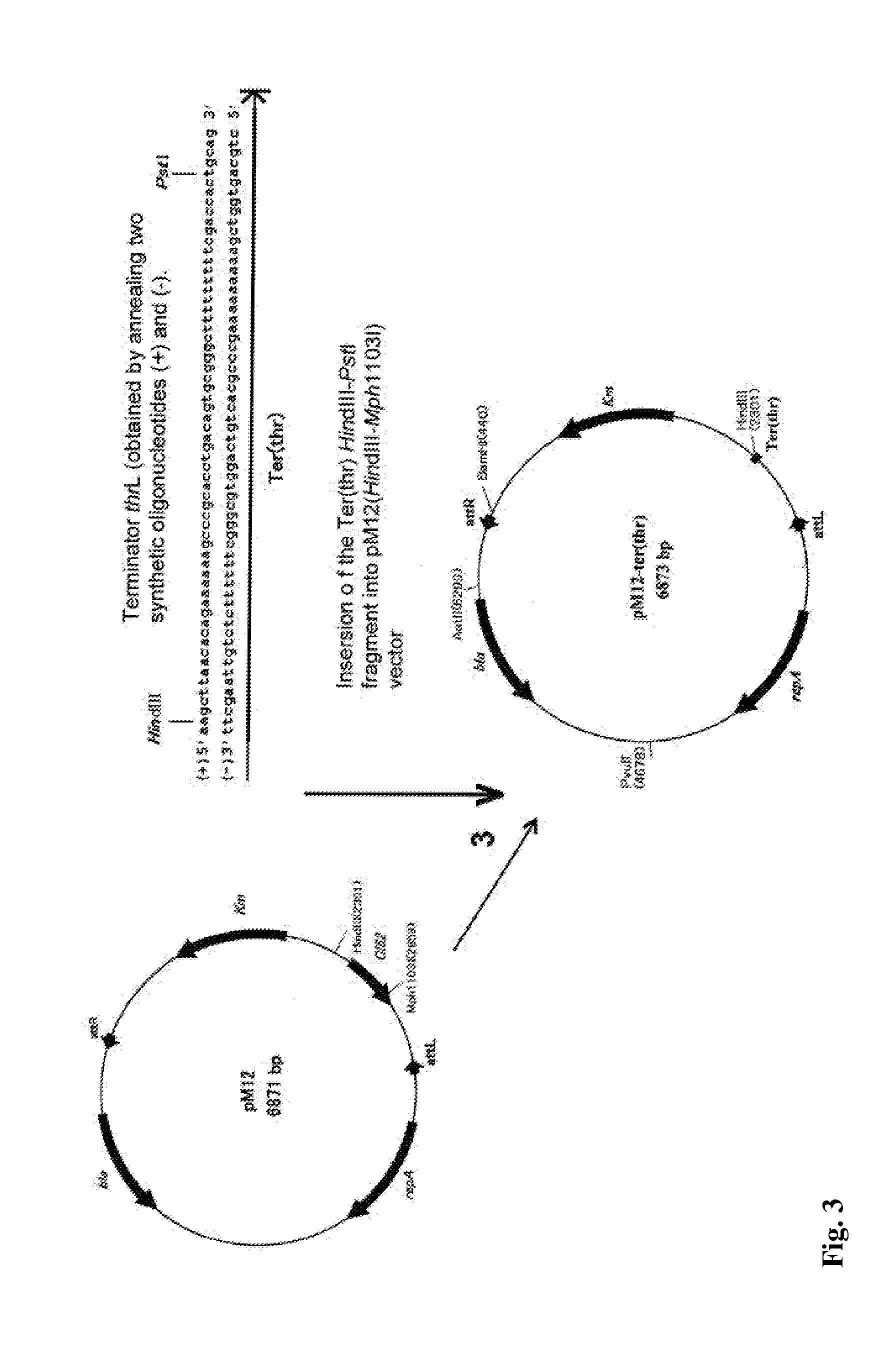Method for producing an l-cysteine, l-cystine, a derivative or precursor thereof or a mixture thereof using a bacterium of enterobacteriaceae family
a technology of enterobacteriaceae and cystine, which is applied in the field of microorganisms, can solve the problems of no reports of sequences of genes involved, and achieve the effect of enhancing the expression of genes involved
- Summary
- Abstract
- Description
- Claims
- Application Information
AI Technical Summary
Benefits of technology
Problems solved by technology
Method used
Image
Examples
example 1
Construction of a strain with enhanced expression of the genes of cysGDNC cluster
[0077]1. Construction of the Strain P. ananatis EYPSG8
[0078]The DNA fragment containing the promoter of the nlpD gene from E. coli was obtained using PCR. The chromosomal DNA of E. coli MG1655 strain was used as a template, and primers P1 (SEQ ID No:6) and P2 (SEQ ID No:7) were used for PCR. The strain MG1655 (ATCC 47076) is available from American Type Culture Collection (Address: 12301 Parklawn Drive, Rockville, Md. 20852, P.O. Box 1549, Manassas, Va. 20108, United States of America). Conditions for PCR were as follows: denaturation step for 3 min at 95° C.; profile for two first cycles: 1 min at 95° C., 30 sec at 50° C., 40 sec at 72° C.; profile for the last 25 cycles: 20 sec at 94° C., 20 sec at 55° C., 15 sec at 72° C.; final step: 5 min at 72° C. The amplified DNA fragment was about 0.2 kb in size, and was purified by agarose gel electrophoresis. Then, the purified fragment was treated with endon...
example 2
Construction of a Strain with Enhanced Expression of Both the Genes of cysGDNC Cluster and the cysQ Gene
[0098]First, the promoter region of the cysQ gene in the strain EYPSG-Pnlp8-cysGDNC(s) was substituted with the PcysK promoter region. PCR was carried out using the plasmid DNA pMW-Km-PcysK as a template and primers P10 (SEQ ID No:15) and P24 (SEQ ID No:29). The plasmid pMW-Km-PcysK was obtained by inserting a DNA fragment containing the promoter region of the cysK gene from P. ananatis, which was obtained by PCR using chromosomal DNA of the strain SC17 as a template and primers P25 (SEQ ID No:30) and P26 (SEQ ID No:31), into the plasmid pMW118-attL-Km-attR-ter_rrnB, prior to ligation and sequentially treated with restrictase XbaI and Klenow fragment of DNA-polymerase I. Conditions for PCR were as follows: denaturation step for 3 min at 95° C.; profile for two first cycles: 1 min at 95° C., 30 sec at 50° C., 40 sec at 72° C.; profile for the last 30 cycles: 20 sec at 94° C., 20 se...
example 3
Construction of a Strain with Enhanced Expression of the cysQ Gene
[0100]The gene cysQ under the control of the promoter PcysK was transferred into the strain EYPSG8(s). The chromosomal DNA was isolated from the strain SC17-PcysK-cysQ. 10 μg of this chromosomal DNA was used to transform P. ananatis EYPSG8(s) by electroporation. The resulting transformants were plated on plates with LB agar containing kanamycin (20 mg / l), and the plates were incubated at 34° C. overnight until individual colonies were visible. The desired transformants were identified by PCR analysis using primers P25 and P26. The obtained strain was named EYPSG-PcysK-cysQ.
PUM
| Property | Measurement | Unit |
|---|---|---|
| temperature | aaaaa | aaaaa |
| temperature | aaaaa | aaaaa |
| temperature | aaaaa | aaaaa |
Abstract
Description
Claims
Application Information
 Login to View More
Login to View More - R&D
- Intellectual Property
- Life Sciences
- Materials
- Tech Scout
- Unparalleled Data Quality
- Higher Quality Content
- 60% Fewer Hallucinations
Browse by: Latest US Patents, China's latest patents, Technical Efficacy Thesaurus, Application Domain, Technology Topic, Popular Technical Reports.
© 2025 PatSnap. All rights reserved.Legal|Privacy policy|Modern Slavery Act Transparency Statement|Sitemap|About US| Contact US: help@patsnap.com



